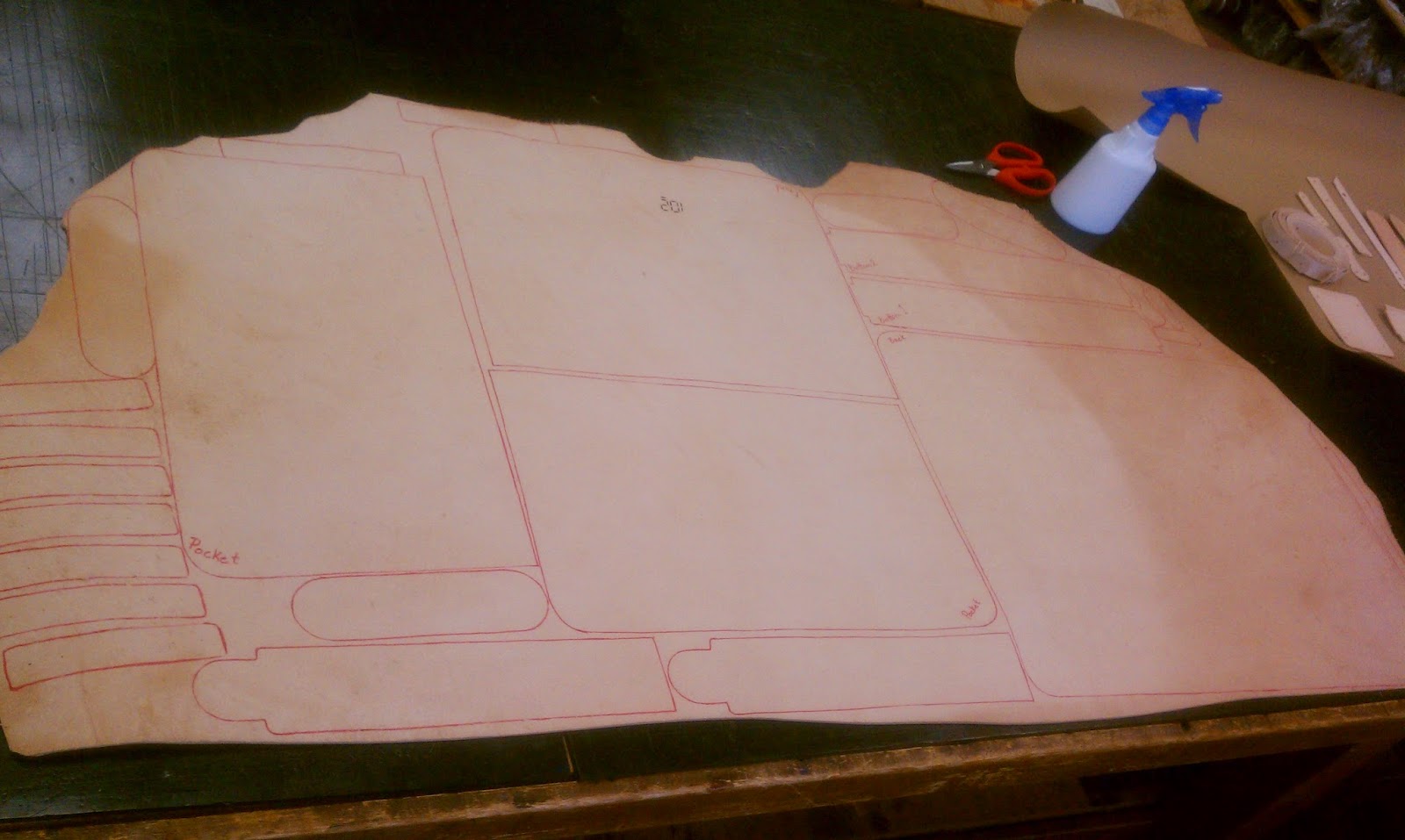The plans were drawn up in January 2014, but the physical work all happened in November and December of 2015. I hope this helps the budding creators out there. If experienced leather workers wish to offer suggestions, I'm all ears!
WWWebb
The Life and Loves of a Verbivore
Monday, December 28, 2015
A Guide to Making a Custom Scripture Case
The plans were drawn up in January 2014, but the physical work all happened in November and December of 2015. I hope this helps the budding creators out there. If experienced leather workers wish to offer suggestions, I'm all ears!
Saturday, August 02, 2014
A Brief Case for a Briefcase
I find that, throughout my life, I've chosen the difficult and long-term kinds of activities and projects (think PhD). Which is not to say that I don't take satisfaction from life's simple pleasures - I do, in abundance. I am simply drawn to the in-depth studies - the lifetime pursuits. As to why this is, my first thought is that I've always liked tackling problems that are complicated and that take many steps to complete, but that first thought is horrific lie. I hate those. Although I might find them deeply fulfilling, they nearly always paralyze me with their dark sense of overwhelm. This is a topic for another post on another day.
What is beyond doubt is that I am immensely proud of myself for finishing one of these projects. I don't necessarily like running, but I love having run. I don't revel in writing, but I love having written - it makes re-writing just a tiny bit less onerous.
Leatherwork seems to be one of the exceptions to my usual pattern. I like all aspects of it, even ones that, transposed to a different craft (think PhD) I would dread. From coming up with an idea, through the design & mock-up phase, to the tedium of hand sewing, I love it all. I love the feel. I love the smell - especially after I treat the hide. When I work with leather, I get a feeling of connection with the earth, its life, and life-cycles that's not as strong when I buy a finished product. Plus, making my own stuff means that I get to customize as much as I want. And I get to work with my hands - to hand-make an actual, physical object that can actually be used by anyone. So, basically the exact opposite of what I need to do to graduate (ha!). In addition, I swear I save money by making my own gear. No, really! (Pay no attention to Pulcheria who counters that "save" is a relative term, since I've got a shop's-worth of new tools and dormant rolls of leather ...but I digress.)
One of my bargain-finds from a couple years back was a "double shoulder" of heavy vegetable tanned leather ($40!) that I decided I would one day make into a bag, similar to a Saddleback Briefcase. Why not just buy one? Cheap-skate grad-student.
As you can see, it wasn't much to look at. But, I made a pattern & I figured I'd spend a few minutes a week on it and should have it ready as a graduation (ha!) present a few years from then. I sketched it all out on the hide, cut it all up, & the pieces rested in peace for over a year, while I slaved away with the end-goal of graduating (ha!), someday.
But, when the zipper on my daily carry school bag started going bad last year, the original timeline was scrapped, and I started working on it in earnest. I figure it took around 50-60 hours of actual work (not counting dye-drying, etc) and the full bill was around $90 (leather, tools, hardware - tools & dye can be re-used), and I'm pleased with the result:
It's traveled across the country and across the Atlantic and looks even better than these photos show now that it's starting to break in a little bit. Hopefully they'll let me use it as part of my dissertation defense. After all, I really do need to graduate (ha!). Someday.
Wednesday, October 20, 2010
A Quick Note on the Restoration
Thursday, September 09, 2010
Johnson's Shut-Ins
Below: An all-too-typical Missouri trail.
 Below: A classic Missouri destination.
Below: A classic Missouri destination.
 Above: My souvenir - I bet you can't tell how far I can reach down my back/shoulders when applying my own sun-screen.
Above: My souvenir - I bet you can't tell how far I can reach down my back/shoulders when applying my own sun-screen.Wednesday, May 19, 2010
You'll Want to Sprint to the Finish
 Born to Run: A Hidden Tribe, Superathletes, and the Greatest Race the World Has Never Seen by Christopher McDougall
Born to Run: A Hidden Tribe, Superathletes, and the Greatest Race the World Has Never Seen by Christopher McDougallFriday, February 26, 2010
Vanity (Eccl 1:2)
Saturday, November 07, 2009
Monarchy and Dynastic Inheritance
A few months ago (back in the high days of summer) Beemer was playing in the back yard as I grilled some burgers. Sometime during the process where raw ground cow metamorphoses into caramelized juicy goodness, Beemer shouted "Daddy, Daddy! I found a cocoon!" I was busy flipping the meat, or something, and so to distract her/postpone any direct involvement I said, "Cool. What kind of cocoon is it?" There was a pause of maybe 15 seconds, then she declared, "It's a Monarch!" "How do you know that?" Without missing a beat she came back with, "Because it's green. With gold dots. And there's orange and black wings inside it."
So, we continued the dynastic tradition (thanks again, mom) and brought it inside. This was the result.
We released it later that day. Tender mercies, indeed.
















